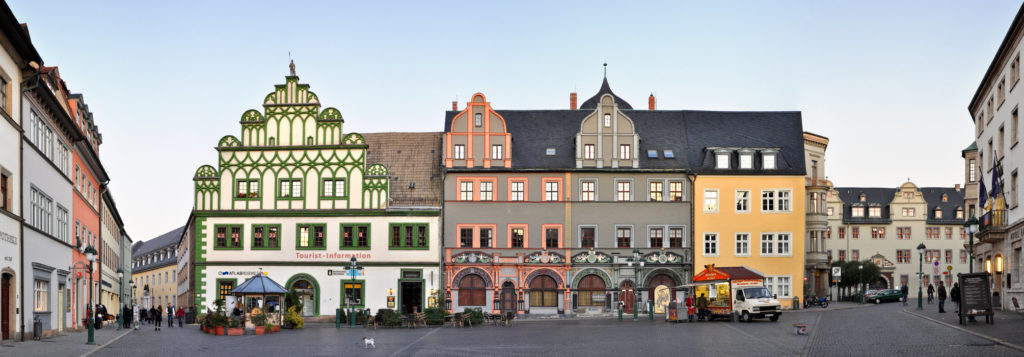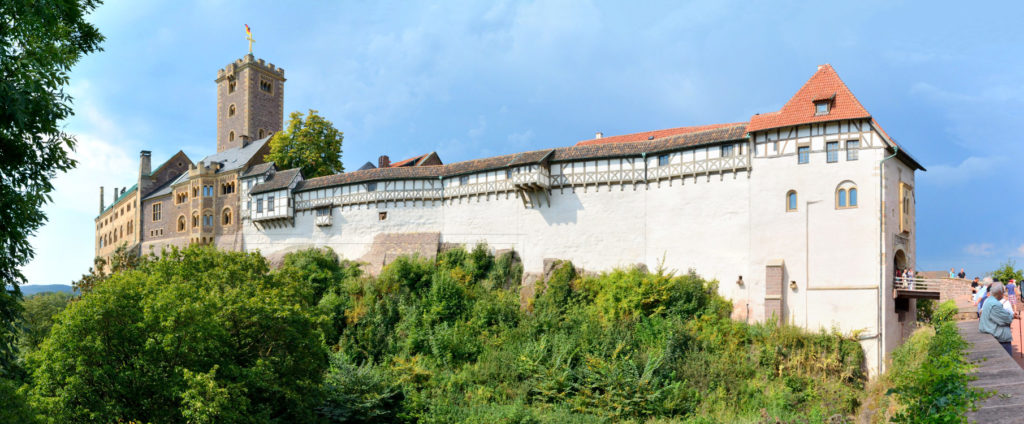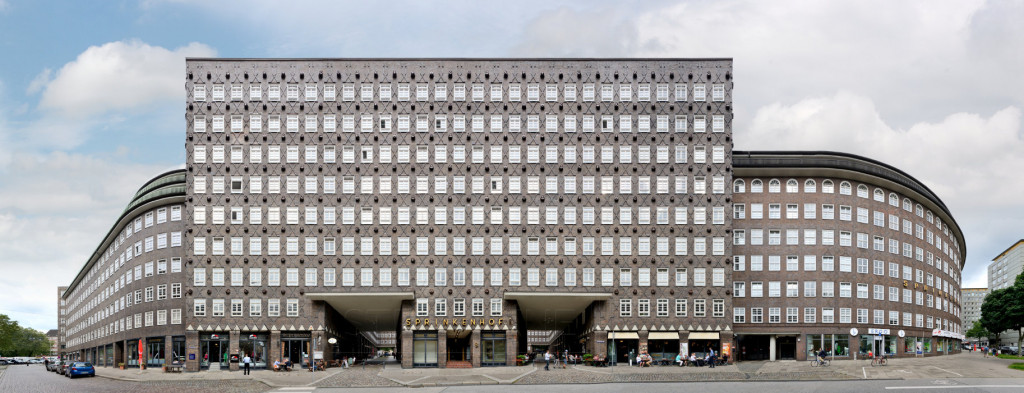The exhibition “Germany Street Fronts” presents …..As a part of our Germany Street Fronts exhibition we have cooperated with the UNESCO world heritage sites association of Germany.
Around 6000 years separate the Prehistoric Pile Dwellings on Lake Constance and the Berlin Modernism Housing Estates – yet they are closely linked in a network of 46 UNESCO world heritage sites which extends throughout Germany and includes castles and palaces, landscapes and gardens, churches and abbeys, industrial heritage, various sites and old towns. Within the aforementioned exhibition we presented several UNESCO sites in streetline cityscapes.
German old town ensembles
Let’s start with the six German old towns that made it onto the list. Whether medieval half-timbering, brick Gothic or baroque splendor, they each show with their own flair how history has been condensed into a very small space.
In 1987, the Hanseatic city of Lübeck was the first northern European city to be listed as an Old Town ensemble. Known as the Queen of the Hanseatic League, it is the patrician houses, the churches and the Holsten Gate, among other things, that characterize the cityscape of this northern German city.
More than 2000 years of European history have shaped the Danube city of Regensburg. Cathedral, city hall, patrician castles, the castle of Thurn and Taxis and the Stadtamhof district located on the other side of the Danube – a high density of cultural monuments can be found in Regensburg, or Ratisbon as the city was historically called.
Quedlinburg was a center of European politics under the first German kings. Here, the Romanesque collegiate church of St. Servatius towers over an old town of 1300 half-timbered houses.
Gothic gabled houses, merchants’ residences and monumental brick churches still bear witness to the wealth of the Baltic cities of Stralsund and Wismar in the Middle Ages. Since 2002, both cities have been a joint UNESCO World Heritage Site.
Stralsund | Mühlenstraße
The thousand-year-old bishop’s and emperor’s city of Bamberg is the sixth city in this round of UNESCO old town ensembles. Under Heinrich II it was the center of the Holy Roman Empire, nowadays the Franconian metropolis is considered a gem of the Baroque. In our archives there are still unedited pictures of the riverbank of Klein-Venedig at the Pegnitz, which we want to present here soon.
From Weimar to Bauhaus
In addition to these old town ensembles, our archive contains numerous other streetline portraits of buildings on the German UNESCO World Heritage List. For example, Classical Weimar represents the intellectual life of Germany as a land of poets and thinkers in the 18th and 19th centuries. During the reign of Duchess Anna Amalia, Goethe and Schiller, among others, lived in the Thuringian city.
Weimar | Stadthaus und Cranachhaus
The margravial opera house in Bayreuth is considered the most important and best preserved example of baroque theater culture. It was built from 1746 to 1750 by the theater architect Giuseppe Galli Bibiena on behalf of the margrave couple Friedrich and Wilhelmine von Brandenburg-Kulmbach. It has been a UNESCO World Heritage Site since 2012.
As an example of the countless castles and palaces in Germany, the Wartburg in Eisenach is shown here. The fortress of the Thuringian landgraves is today considered a symbolic place of German history. Not only as a place and witness to numerous historical events, but also as the place of activity of St. Elizabeth of Thuringia and as the place of exile where Luther translated the New Testament.
One of the more recent UNESCO World Heritage Sites in Germany (and the Czech Republic) is the Erzgebirge/Krušnohoří Mountains Region. In 2019, the region was added to the list as a center of scientific and technological mining innovation and a unique montane cultural landscape. In our archive you can find architectural monuments from Schneeberg, Aue, Freiberg, Marienberg or Annaberg-Buchholz, among others, as well as a small look into the Christmas Tradition of the Ore Mountains.
The Fürst-Pückler Park Bad Muskau is a transnational landscape park in English style. While the larger part lies in Poland on the other side of the Neisse River, the central part with the Neues Schloss Castle is located in Bad Muskau in Saxony.
Panorama to follow
Hamburg’s Speicherstadt and Kontorhausviertel districts have been UNESCO World Heritage Sites since 2016. Together, they form a unique example of a functionally coherent area of department stores and offices that is typical of a historically evolved port city. Here you will find, on the one hand, the huge red brick buildings of the Speicherstadt built in the style of historicism (see title image) and, as a contrast, the iconic Kontorhäuser in the style of clinker expressionism.
Hamburg Sprinkenhof, Kontorhausviertel
We will conclude with the German icon of modernism, the Bauhaus. The architecture college and its professors founded the style of the New Objectivity in Weimar, Dessau and Berlin, which had a decisive influence on the architecture and art of the 20th century by bringing together art and craft and focusing primarily on purposeful structures.












